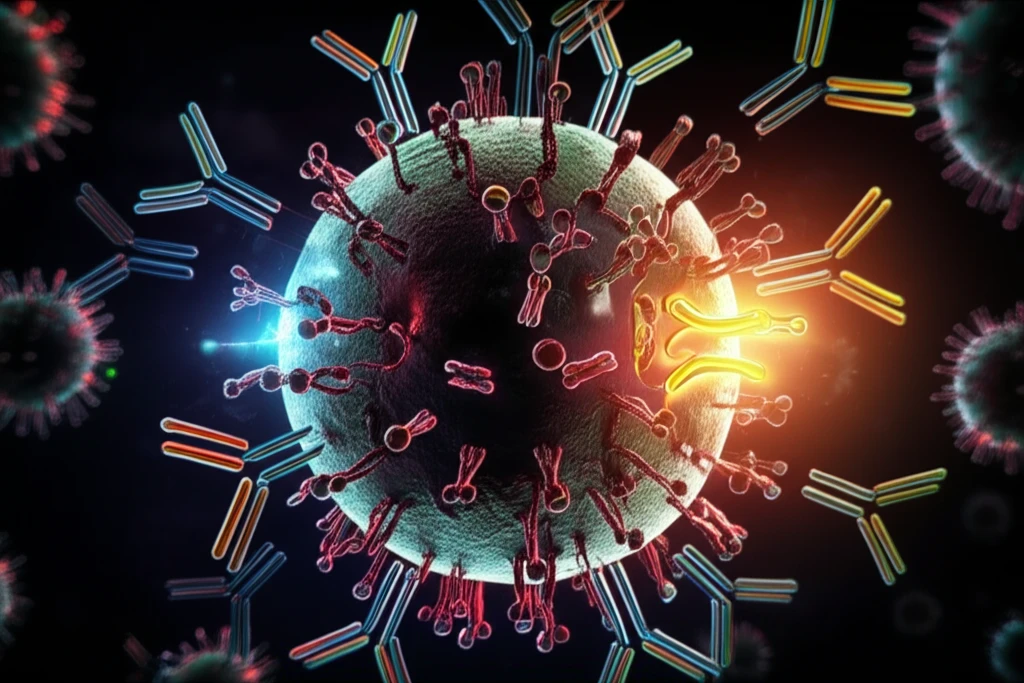
RSV Vaccine Breakthrough: A Promising New Hope for Infants and Adults
"Scientists are one step closer to a stable and effective RSV vaccine, paving the way for better protection against this common respiratory virus."
Respiratory Syncytial Virus (RSV) is a widespread and common virus that causes infections in the lungs and respiratory tract. While often presenting as a mild, cold-like illness in adults and older children, RSV can lead to severe complications, especially in infants, older adults, and individuals with compromised immune systems. Globally, RSV is a leading cause of lower respiratory tract infections, highlighting the urgent need for effective preventive measures.
Currently, there is no approved vaccine available to prevent RSV infection, and treatment options are limited to managing symptoms. Passive immunization with palivizumab, a monoclonal antibody, is available for high-risk infants, but this only offers temporary protection and is not a long-term solution for the broader population. This gap in preventative care underscores the importance of ongoing research and development efforts aimed at creating a safe, effective, and long-lasting RSV vaccine.
A significant challenge in developing an RSV vaccine lies in the virus's fusion (F) protein, which undergoes structural changes, shifting from a metastable prefusion form to a stable postfusion form. The prefusion form is the primary target for neutralizing antibodies produced during natural RSV infection. Scientists have been focusing on stabilizing the RSV F protein in its prefusion conformation to create more effective vaccines. Recent research has led to the design and characterization of a novel fusion glycoprotein vaccine with enhanced stability, marking a significant step forward in RSV prevention.
The Quest for a Stable RSV Vaccine: Understanding the Challenges

The RSV fusion (F) protein is essential for the virus to enter host cells. This protein exists in two main conformations: prefusion and postfusion. The prefusion conformation is present before the virus infects a cell, while the postfusion conformation occurs after the virus has fused with the cell membrane. Antibodies that target the prefusion F protein are more effective at neutralizing the virus, making it a prime target for vaccine development.
- Structure-Based Design: Engineering the F protein to favor the prefusion conformation.
- Introducing Mutations: Adding specific mutations to stabilize the protein's structure.
- Developing Adjuvants: Using substances that boost the immune response and improve vaccine stability.
Looking Ahead: The Future of RSV Prevention
The development of the F111 variant represents a significant advancement in the quest for a stable and effective RSV vaccine. By leveraging structure-based design and rigorous testing, researchers have created a promising candidate that maintains its integrity under various storage conditions and elicits a strong immune response. As this research progresses, the world moves closer to a future where RSV is no longer a major threat to infants, older adults, and immunocompromised individuals. Further studies will be crucial to assess the long-term efficacy and safety of F111 in clinical trials, paving the way for its potential use in widespread vaccination programs.
